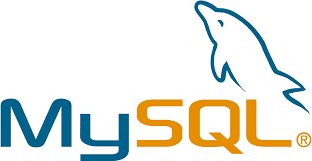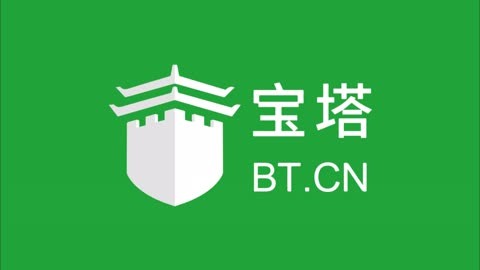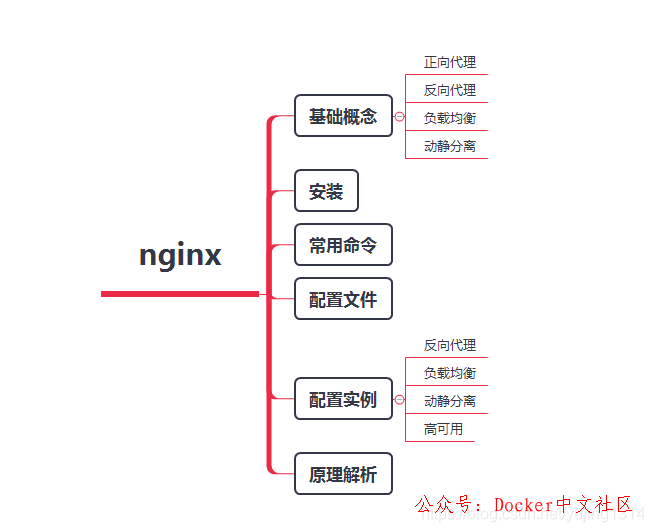hexo默认不支持流程图,flowchart是一种简便好用的解决方案,但由于其语法过于简单,导致其在应付稍复杂一些的流程图时捉襟见肘,本文记录在hexo中添加Mermaid流程图的方法。
简介 {#简介}
-
Mermaid是一个基于Javascript的图表工具,它使用Markdown启发的文本定义和一个渲染器来创建和修改复杂的图表。Mermaid的主要目的是帮助文档工作跟上发展。
-
图解和文档花费了开发人员宝贵的时间,而且很快就会过时。但是,没有图表或文档会破坏生产力,难以直观表达信息。Mermaid通过减少创建可修改的图表所需的时间、精力和工具来解决这个问题,使内容更智能、更可重复使用。Mermaid图表的文本定义允许它很容易被更新,它也可以成为生产脚本(和其他代码)的一部分。
添加支持 {#添加支持}
安装插件 {#安装插件}
fluid 可以不需要安装插件
Hexo 配置 {#Hexo-配置}
- 在Hexo配置文件中修改
主题配置 {#主题配置}
Next {#Next}
- 在主题配置文件中找到
mermaid选项,将enable设置为true。

Fluid {#Fluid}
- 在主题配置文件中找到
mermaid选项,将enable设置为true。

其他主题根据具体情况配置。
加入mermaid代码块 {#加入mermaid代码块}
官网有最全的说明文档 https://mermaidjs.github.io/ ,此处记录常用使用方法。
graph TD
B((开始)) -->C{判断}
C -- a=1 -->D[执行语句1]
C -- a=2 -->E[执行语句2]
C -- a=3 -->F[执行语句3]
C -- a=4 -->G[执行语句4]
D--> AA((结束))
E--> AA
F--> AA
G--> AA
- 另一种写法
graph TD
A[Hard] -->|Text| B(Round)
B --> C{Decision}
C -->|One| D[Result 1]
C -->|Two| E[Result 2]
流程图语法 {#流程图语法}
方向 {#方向}
| 方向 | 含义 | |----|-------| | TB | 从上到下 | | BT | 从下到上 | | RL | 从右到左 | | LR | 从左到右 | | TD | 与TB相同 |
节点 {#节点}
语法结构如下:A[名称] --> B(名称)
其中,A、B均代表形状名称,-->表示箭头指向,形状样式用后面的括号来表示,括号里面的内容是形状中要显示的文本内容。其中有以下几种形状:
| 括号形式 | 形状样式 | |-------|-------| | [ ] | 矩形框 | | ( ) | 圆角矩形框 | | { } | 菱形 | | (( )) | 圆形 |
连接线 {#连接线}
| 符号 | 箭头 | |-------------------------|-----------| | --> | 箭头 | | --- | 没有箭头 | | -- 文字 --- / --- |文字| | 带文字的连接线 | | -->|文字| / -- 文字 --> | 带箭头和文字的连接 | | -.-> | 虚线 | | -. 文字 .-> | 带文字的虚线连接 | | ==> | 粗连接线 | | == 文本 ==> | 带文本的粗连接 |
子图 {#子图}
语法:
graph TB
c1-->a2
subgraph one
a1-->a2
end
subgraph two
b1-->b2
end
subgraph three
c1-->c2
end
样式链接 {#样式链接}
graph LR
id1(Start)-->id2(Stop)
style id1 fill:#f9f,stroke:#333,stroke-width:4px
style id2 fill:#ccf,stroke:#f66,stroke-width:2px,stroke-dasharray: 5, 5
注释 {#注释}
- mermaid注释为
%%
综合应用 {#综合应用}
graph TB
id1(圆角矩形)--普通线-->id2[矩形]
subgraph 子图表
id2==粗线==>id3{菱形}
id3-.虚线.->id4>右向旗帜]
id3--无箭头---id5((圆形))
end
style id1 fill:#f9f,stroke:#333,stroke-width:4px
甘特图 {#甘特图}
gantt
section Section
Completed :done, des1, 2014-01-06,2014-01-08
Active :active, des2, 2014-01-07, 3d
Parallel 1 : des3, after des1, 1d
Parallel 2 : des4, after des1, 1d
Parallel 3 : des5, after des3, 1d
Parallel 4 : des6, after des4, 1d
类图 {#类图}
classDiagram
Class01 <|-- AveryLongClass : Cool
<<interface>> Class01
Class09 --> C2 : Where am i?
Class09 --* C3
Class09 --|> Class07
Class07 : equals()
Class07 : Object[] elementData
Class01 : size()
Class01 : int chimp
Class01 : int gorilla
class Class10 {
<<service>>
int id
size()
}
泛化 (Generalization) {#泛化-(Generalization)}
继承关系,子类与父类的关系。
classDiagram
A<|--B
classDiagram
Animal <|-- Duck
Animal <|-- Fish
Animal <|-- Zebra
Animal : +int age
Animal : +String gender
Animal: +isMammal()
Animal: +mate()
class Duck{
+String beakColor
+swim()
+quack()
}
class Fish{
-int sizeInFeet
-canEat()
}
class Zebra{
+bool is_wild
+run()
}
实现(Realization) {#实现(Realization}
classDiagram
class IFlyable{
<<interface>>
+ flying()
}
IFlyable<|..Bat
Bat:+flying()
组合(Composition) {#组合-Composition}
classDiagram
Computer *-- CPU
Computer *-- Mainboard
Computer *-- HardDisk
Computer *-- MemeryCard
聚合(Aggregation) {#聚合-Aggregation}
classDiagram
Company o-- Empolyee
关联(Association) {#关联-Association}
classDiagram
Reader "1..*" -- "1..*" Book
Book "1..*"--> "1"Author
依赖(Dependency) {#依赖-Dependency}
classDiagram
Animal..>Food
总结 {#总结}
泛化=实现>组合>聚合>关联>依赖
classDiagram
classA --|> classB : Generalization
classM ..|> classN : Realization
classC --* classD : Composition
classE --o classF : Aggregation
classG --> classH : Association
classI -- classJ : Association
classK ..> classL : Dependency
状态图 {#状态图}
stateDiagram-v2
[*] --> Still
Still --> [*]
Still --> Moving
Moving --> Still
Moving --> Crash
Crash --> [*]
饼图 {#饼图}
pie
"Dogs" : 386
"Cats" : 85
"Rats" : 15
旅程图 {#旅程图}
journey
title My working day
section Go to work
Make tea: 5: Me
Go upstairs: 3: Me
Do work: 1: Me, Cat
section Go home
Go downstairs: 5: Me
Sit down: 3: Me
序列图语法 {#序列图语法}
使用以下语法开始序列图
参与者 {#参与者}
定义参与者
消息线 {#消息线}
|类型|描述|
|->|无箭头的实线|
|-->|无箭头的虚线|
|->>|有箭头的实线|
|-->>|有箭头的虚线|
|-x|末端为叉的实线(表示异步)|
|--x|末端为叉的虚线(表示异步)|
处理中 {#处理中}
在消息线末尾增加 + ,则消息接收者进入当前消息的"处理中"状态;
在消息线末尾增加 - ,则消息接收者离开当前消息的"处理中"状态。
或者使用以下语法直接说明某个参与者进入"处理中"状态
标注 {#标注}
语法如下
其中位置表述可以为
| 表述 | 含义 | |----------|---------------| | right of | 右侧 | | left of | 左侧 | | over | 在当中,可以横跨多个参与者 |
循环 {#循环}
语法如下
判断 {#判断}
如果遇到可选的情况,即没有 else 分支的情况,使用如下语法:
综合应用 {#综合应用-2}
sequenceDiagram
participant z as 张三
participant l as 李四
loop 日复一日
z->>l: 吃了吗您呐?
l-->>z: 吃了,您呢?
activate z
Note left of z: 想了一下
alt 还没吃
z-xl: 还没呢,正准备回去吃
else 已经吃了
z-xl: 我也吃过了,哈哈
end
opt 大过年的
l-->z: 祝您新年好啊
end
end
官方用例 {#官方用例}
sequenceDiagram
Alice->>John: Hello John, how are you?
loop Healthcheck
John->>John: Fight against hypochondria
end
Note right of John: Rational thoughts!
John-->>Alice: Great!
John->>Bob: How about you?
Bob-->>John: Jolly good!
参考资料 {#参考资料}
- https://mermaidjs.github.io
- https://www.jianshu.com/p/af48cc77b57a
- https://baijiahao.baidu.com/s?id=1641809867954032650&wfr=spider&for=pc
- https://blog.csdn.net/fenghuizhidao/article/details/79440583
- https://github.com/mermaid-js/mermaid
文章链接:
https://www.zywvvd.com/notes/hexo/website/14-mermaid/mermaid/
 51工具盒子
51工具盒子




